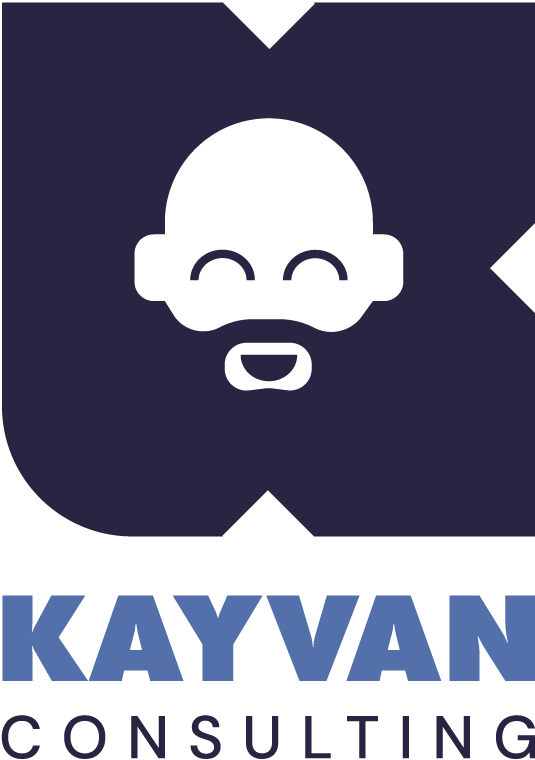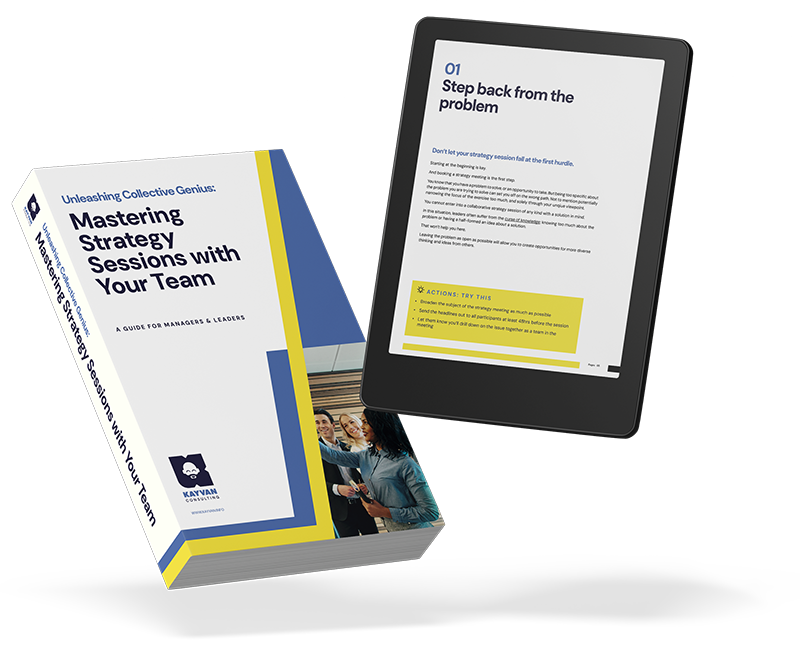Let’s just get our best people in the room and brainstorm, right?
Five years or so ago, I was running a digital agency.
I had a wonderful team of hugely talented designers, developers, creatives, project managers and a client team. Every week we responded to client briefs around a similar deliverable, but each one needed careful consideration. We needed to assess each brief and come up with a way of best addressing it.
Our method was to get everyone in a room and “brainstorm” ideas.
But what did this actually mean?

Our brainstorming approach at the time
At the time I had considered it to be a a healthy, open discussion. Everyone was welcome to put their ideas forward to the group. We’d listen, discuss, then choose how to proceed.
Looking back now, there was clearly a pattern to these meetings:
- Myself or another senior team member would attempt to provide some structure, explain the brief and set the scene
- We’d ask for input from the team
- Some participants would immediately put ideas forward
- Some would ask questions
- Some would sit silently
- We’d discuss and debate a bunch of ideas (in a fairly unstructured manner)
- Something would get decided on and we’d leave the meeting
Something had always bothered me about these sessions.
But working in such a high pressured environment I never had the time to explore this nagging feeling. I knew we had some amazing talent in our team. I knew that between us we had the ability to come up with killer ideas and killer solutions.
But for some reason in those sessions we weren’t quite getting the best out of everyone.

The quietest person in the room
During one of these sessions something happened.
A new recruit, having sat quietly in several of these sessions, made their voice heard during a moment of silence.
I can’t remember the brief. Nor can I remember what idea they put forward. I just remember being in that moment thinking – we need to hear your ideas more – because your viewpoint is DIFFERENT and you have amazing ideas.
So what did I do? Following the conclusion of that session I spoke to that person and said something to the effect of:
“You have great ideas. I’d love you to be more involved in these sessions. Please speak up more, as I think the team would really benefit from your input”
Maybe this would be suitably motivational for some. Maybe it was motivational for this person. But I look back at that interaction with some regret, because I see now that I’d missed the point entirely.
There wasn’t an issue this one person’s confidence in speaking up.
The problem was with the framework we were using and the environment we were creating.
Here are some of the mistakes we made.
Framing
We weren’t involving the team in helping us frame the problem we were trying to solve. We weren’t helping them understand the problem either. And we weren’t allowing them to help us re-frame the problem into something we all understood and felt invested in solving.
Seniors taking too much airtime
The ideation process wasn’t a process at all. It was an open conversation. And what did that result in? The most senior people in the room (including me) or the most confident speakers (also including me) taking up 90% of the airtime. Our seniority and experience had somehow blinkered us to the true purpose of a group session – getting valuable input and ideas from everyone.
Linear ideation
We were talking about ideas one at a time, which didn’t leave enough time to hear all the ideas. In fact, it didn’t create the right environment for everyone to even think about a good idea without being distracted.
No time management
Even if someone had come up with a good idea, there was no guarantee that the group would get a chance to hear them talk about it. We were eating through the limited time we had available by listening to one person speak at a time.
Decisions
Once a handful of ideas had been discussed, the decision on what to move forward with was decided by the most senior person’s opinion on the best idea.
No group choices
Privately asking that one person to try to become more involved in future wasn’t the most effective thing to do. Having the entire team get behind that idea and collectively choosing it together – on its merits – would have been way more powerful.

The Workshop: A different approach to collaboration
The issues I’ve described above are common in a much wider set of scenarios.
Group workshops, strategy sessions, even team meetings. All these serve as everyday examples of the need to get a group of people to collaborate and problem solve. But more often than not, the person running these sessions ends up approaching it without any formal training in how to get the best out of everyone.
If you’re still reading this, then perhaps you’ve been in a similar situation?
The good news is that solutions to these problems are out there. I’ve been on a mission over the past few years to figure this out. To learn how to make these group sessions more effective, more inclusive, more democratic and more structured.
I’ve read the books. I’ve learnt from some of the best in this field. I’ve even got qualified in doing this (I’m now a certified Master Workshopper thanks to the wonderful folks at AJ&Smart). Most importantly, I’ve taken this approach into many different scenarios to stress test it.
The answer I’ve landed on is to have someone neutral, a guide, managing the session.
Someone who isn’t a participant, but whose role is to guide the team to a solution. Someone who helps avoid internal politics. Who avoids working-style differences that typically arise in a group meeting.
A Workshop Facilitator.
One of the core mechanics used when designing and facilitating workshops is that of working together, alone. This goes a long way to help remedy the problems laid out here, but isn’t a full solution in itself.
Having a custom workshop designed by an experienced Workshop Facilitator can help solve problems within your company. Get in touch to chat and find out more!




